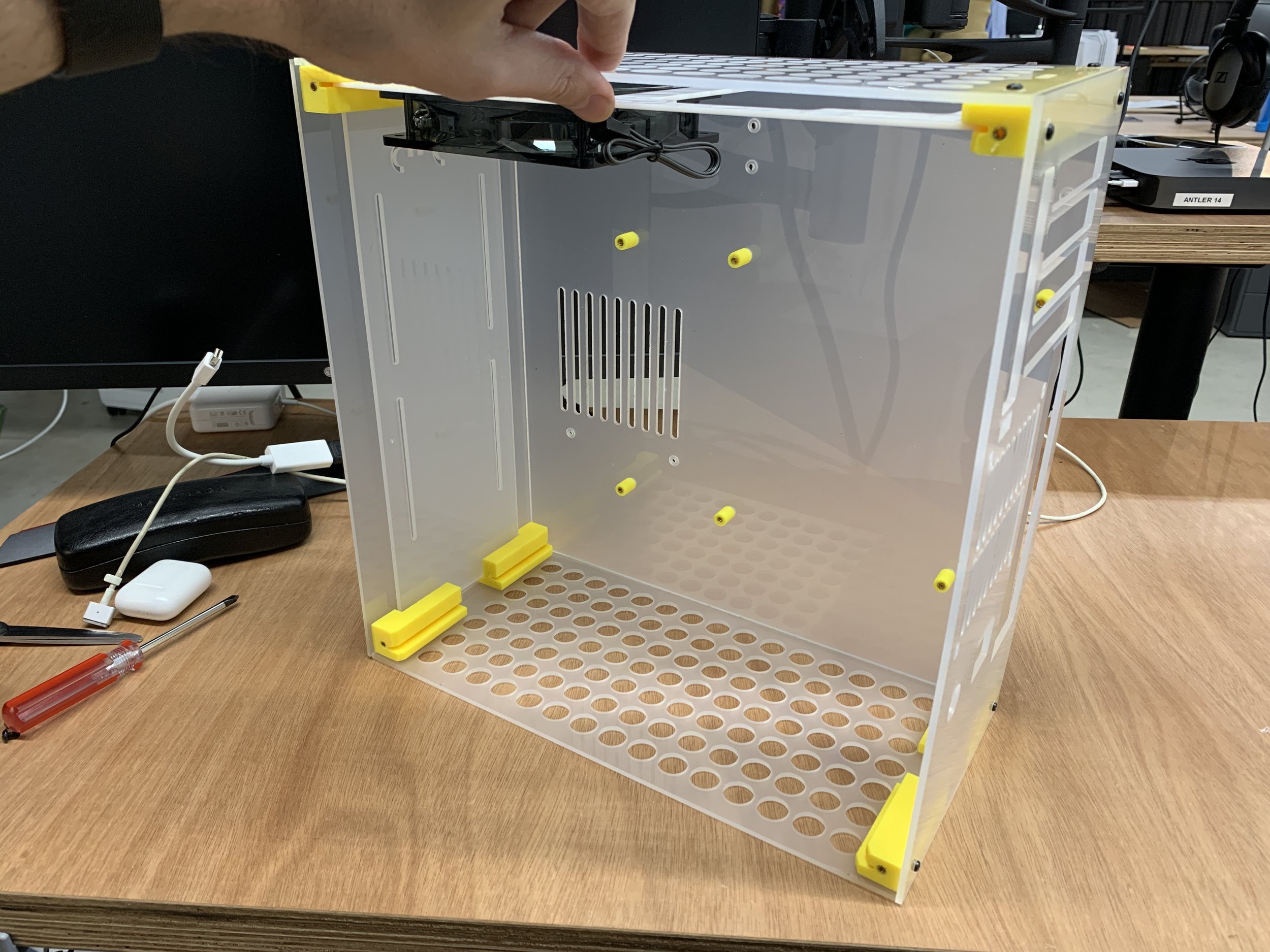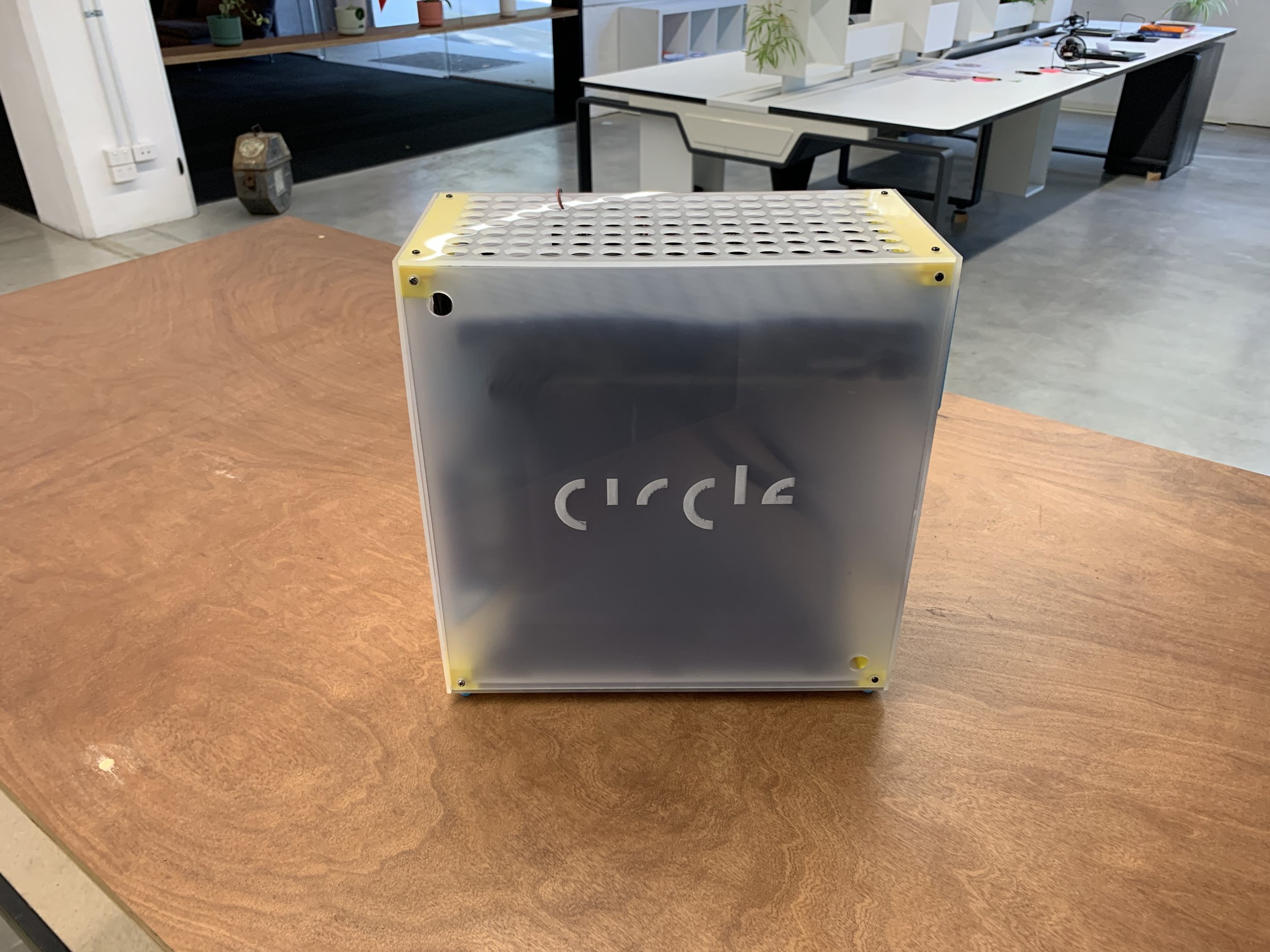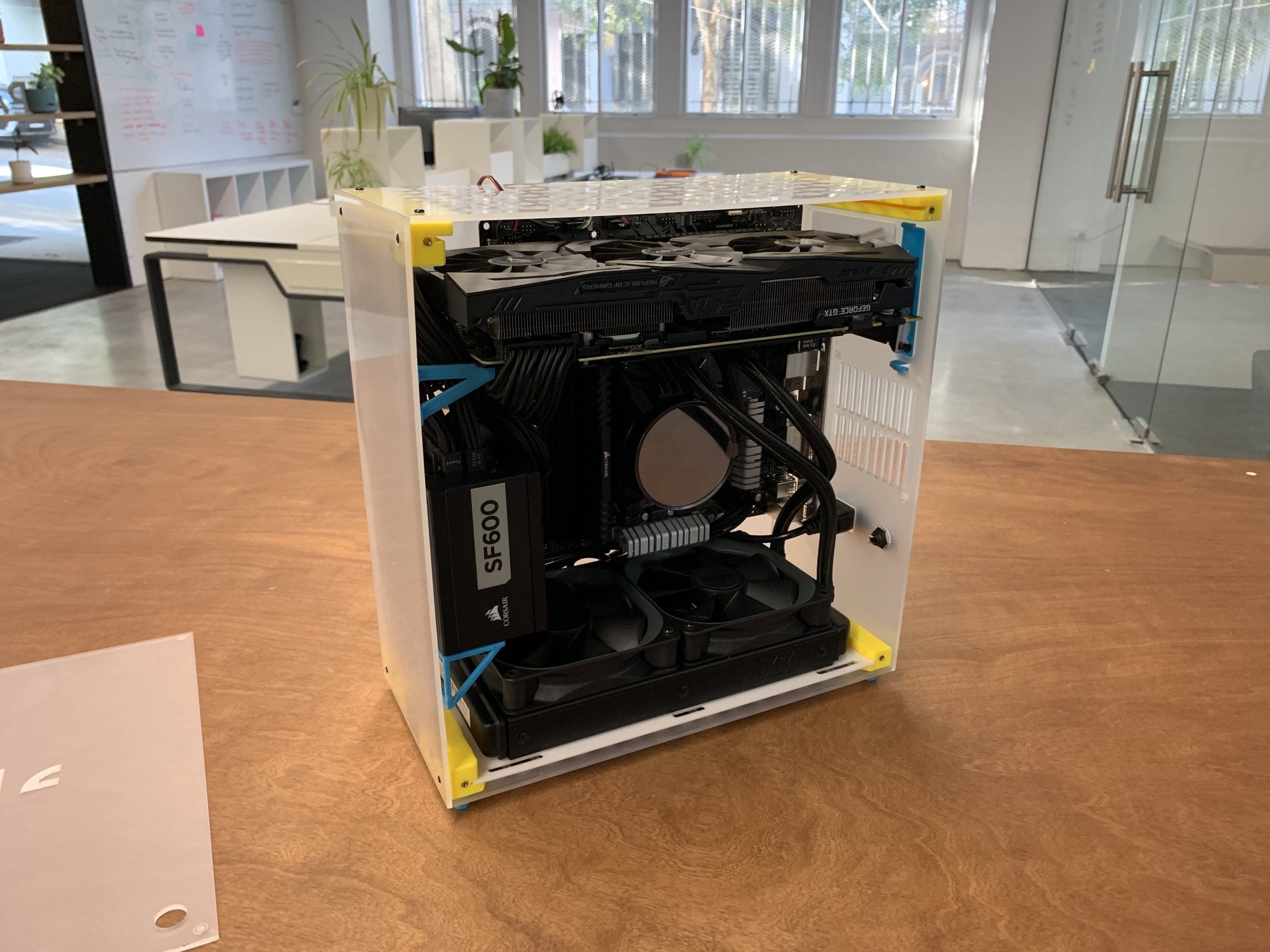Space Case - Open Source 3D Printable Mini-ITX Computer Case
TLDR
Space Case: Makers Edition is an attempt at designing the best 3d printed mini-itx computer case available today. As an open-source project, you can download and print the case right now from the github.
Don’t like reading? Here is a video version of this article where I cover similar content. This article contains more detail if you want to dig deeper.
Introduction
I love mini-itx computer cases. So much so that I’ve been designing, prototyping and manufacturing them for over 5 years now. Computers are elegant, timeless tools, and I think we should honour them with our best attempt at great design.
My first commercial product was the Circle Pro, a CNC machined aluminium and glass case that sold out of its production runs, often within minutes. It was a hit from the perspective of a low volume, boutique case design. And yet I decided to discontinue it with no obvious successor. Why?
The Circle Pro case from 2018.
Circle Pro in production. Note the solid CNC machines panels.
Why I discontinued the Circle Pro
It comes down to two main challenges: the high cost and inefficiencies of low volume manufacturing overseas, and the fast and ever changing world of computer components. Let’s break these issues down.
Low volume traditional manufacturing
Anyone who has tried to make a custom product before knows that overseas manufacturers don’t like low volumes. Most of the work in manufacturing happens at the tooling stage - setting up the machinery, moulds and dies to be able to repeatably and reliably make a part. If you’ve done that work, you are then able to make thousands of that part cheaply and reliably.
But what if you’re making a high-end product for a small market - i.e. boutique CNC machined computer cases? The quantities required are in the hundreds to low thousands, not the tens of thousands that manufacturers get out of bed for. If you order low volume - manufacturers need to charge more to offset the tooling.
This wouldn’t be a problem if we could charge $800-1000 for a computer case, but the market is clearly not ready for such a product. When I initially launched Circle Pro at $400, the backlash I received was intense. I even got hate mail. The reality is that even at this price, margins are low.
Therein lies the problem - the high cost of low volume manufacturing means I couldn’t make Circle Pro a viable long term venture at the time.
Who knows, in future there might be a viable market for super high-end cases, similar to the mechanical keyboard scene.
The changing computer component landscape
The second major challenge that Circle Pro faced was rapidly shifting computer component needs. I made a calculated risk on the design that future graphics card generations would continue to be launched in the mini-itx form factor. The opposite became true with new generations of cards increasing in power consumption and size. This hardware limitation greatly limited the market for Circle Pro to enthusiasts who were willing to compromise on their GPU selection.
A unique disadvantage
These two challenges combine to create a high-risk, low reward dynamic for low volume cottage industry computer case projects. Only manufacturers with access to high volume capabilities (like SSUPDs relationship with Lian Li, resulting in the Meshlicious / Meshroom cases), are able to effectively produce designs in competitive quantities and good cost to value ratios.
Another way
But what if there was another way? A way to overcome the challenges facing boutique, low volume case projects. One viable solution is local digital fabrication: think 3D printing and laser cutting.
So I set myself the challenge of designing a computer case that could completely sidestep traditional low volume manufacturing issues by being made locally with low cost 3D printing and off-the-shelf components.
The design requirements
In setting the design limitations of this project I used the following wish list. The design had to:
Be easy to print with low barrier to entry. Printable on smaller printers, i.e. Ender 3 / Prusa Mini
Utilise off-the-shelf parts.
Fit mainstream hardware. At least 240mm radiator. Full length, 3 slot gpus at a minimum.
Have great cooling and airflow.
Be easy to build in.
Look good.
Most importantly, be flexible enough to accomodate unique builds and rapidly changing computer hardware requirements. i.e. highly moddable.
Design prototyping
I made hundreds of prototypes, testing different processes, materials and layouts. The concept below was designed to utilise laser cut panels as the main structural elements of the case. In practice this was hard to build in and I eventually rejected it. This is one of at least 5 major concepts that were produced before the final design.
Space Case V1
The design of the Space Case began to form on a couple of founding principles:
The computer building process had to be easy - therefore you needed to be able to assemble the case without the panels getting in the way. This meant an internal ‘core’ frame.
It needed to be printable on small, consumer 3d printers, so that ruled out printing long frame members. This needed a good solution.
Enter the concept of carbon tubes as the main structural elements. These were affordable, easy to acquire off-the-shelf components that provided strength, scalability, and fulfilled all design requirements.
Space Case prototyping
The snap-lock components were a response to choosing carbon fibre tubes. This resulted in an easy to use, modular component system.
I chose a layout that did not require a riser card - as this is often the most expensive part in computer builds. I also didn’t want to have to deal with PCIe compatibility issues between gen 3, 4 and 5 on the first version of this case. The design is flexible enough however that we could incroporate a riser-card sandwich design into the same frame if there’s interest in that.
I wanted the side panels to attach toollessly, so I incorporated simple screw on ‘frame pins’ that allow you to slide lock the panels in place. In V1 of the design I opted for simple laser cut acrylic panels. In future I’d love to offer higher quality metal panels as an optional add-on.
Space Case V1
What’s next?
You can download the files to build your very own 3d printed computer case HERE.
If you have a go at making one, feel free to reach out with comments, design improvement suggestions - the goal is to make this a community platform that we all contribute to, and to ultimately make the best 3d printed case available to all.
Happy making!
0 Likes









